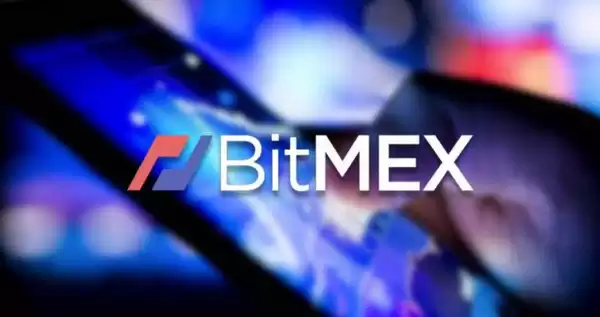-
 Bitcoin
Bitcoin $114200
0.00% -
 Ethereum
Ethereum $3637
0.56% -
 XRP
XRP $2.950
-2.01% -
 Tether USDt
Tether USDt $0.9999
0.02% -
 BNB
BNB $761.0
0.55% -
 Solana
Solana $164.1
-1.38% -
 USDC
USDC $0.9999
0.02% -
 TRON
TRON $0.3332
0.36% -
 Dogecoin
Dogecoin $0.2012
-0.52% -
 Cardano
Cardano $0.7261
-1.41% -
 Hyperliquid
Hyperliquid $37.62
-2.13% -
 Stellar
Stellar $0.3930
-2.65% -
 Sui
Sui $3.441
-0.16% -
 Bitcoin Cash
Bitcoin Cash $563.8
0.70% -
 Chainlink
Chainlink $16.50
0.09% -
 Hedera
Hedera $0.2424
-0.14% -
 Ethena USDe
Ethena USDe $1.001
0.01% -
 Avalanche
Avalanche $22.20
0.00% -
 Litecoin
Litecoin $118.0
-2.48% -
 UNUS SED LEO
UNUS SED LEO $8.991
0.12% -
 Toncoin
Toncoin $3.195
-3.87% -
 Shiba Inu
Shiba Inu $0.00001217
0.12% -
 Uniswap
Uniswap $9.674
-0.21% -
 Polkadot
Polkadot $3.633
1.00% -
 Monero
Monero $295.3
-0.82% -
 Dai
Dai $0.9999
0.00% -
 Bitget Token
Bitget Token $4.321
-0.41% -
 Cronos
Cronos $0.1392
0.73% -
 Pepe
Pepe $0.00001027
-0.89% -
 Aave
Aave $258.5
0.32%
How to operate BitMEX contract
To operate a BitMEX contract, create an account, fund it, place an order specifying contract, order type, and quantity, monitor the order, and manage your risk through margin and stop orders.
Nov 10, 2024 at 08:04 pm

How to operate BitMEX contract
BitMEX is a cryptocurrency exchange that offers perpetual futures contracts for trading. Perpetual futures contracts are similar to traditional futures contracts, but they do not have an expiration date. This means that you can hold a perpetual futures contract indefinitely, or until you decide to close it.
To operate a BitMEX contract, you will need to:
- Create a BitMEX account. You can create a BitMEX account by visiting the BitMEX website and clicking on the "Sign Up" button.
- Fund your BitMEX account. You can fund your BitMEX account by depositing Bitcoin or another cryptocurrency into your account.
- Place an order. To place an order, you will need to select the contract that you want to trade, the order type, and the order quantity.
- Monitor your order. Once you have placed an order, you can monitor its status by clicking on the "Orders" tab in the BitMEX web interface.
Order types
There are three main types of orders that you can place on BitMEX:
- Market orders are executed immediately at the current market price.
- Limit orders are executed only when the market price reaches a certain level.
- Stop orders are executed only when the market price reaches a certain level, and then they become market orders.
Order quantity
The order quantity is the number of contracts that you want to buy or sell.
Margin
When you trade perpetual futures contracts on BitMEX, you will need to use margin. Margin is a form of leverage that allows you to trade with more money than you have in your account.
The amount of margin that you need to use will depend on the contract that you are trading and the order type that you have placed.
Funding
Perpetual futures contracts are funded on a daily basis. This means that you will need to pay or receive funding on a daily basis, depending on the position that you are holding.
The funding rate is determined by the difference between the perpetual futures contract price and the spot price of the underlying asset.
Liquidation
If you lose too much money on a perpetual futures contract, you will be liquidated. Liquidation is the process of selling your contract at a loss to cover your margin debt.
The liquidation price is determined by the margin level of your account. The margin level is the ratio of your account equity to your margin debt.
Step-by-step guide to operating a BitMEX contract
- Create a BitMEX account. You can create a BitMEX account by visiting the BitMEX website and clicking on the "Sign Up" button.
- Fund your BitMEX account. You can fund your BitMEX account by depositing Bitcoin or another cryptocurrency into your account.
- Choose the contract that you want to trade. BitMEX offers perpetual futures contracts for a variety of cryptocurrencies, including Bitcoin, Ethereum, and Litecoin.
- Place an order. To place an order, you will need to select the contract that you want to trade, the order type, and the order quantity.
- Monitor your order. Once you have placed an order, you can monitor its status by clicking on the "Orders" tab in the BitMEX web interface.
- Manage your risk. When you trade perpetual futures contracts, it is important to manage your risk. This means that you should only trade with money that you can afford to lose, and you should use stop orders to limit your losses.
- Withdraw your profits. Once you have made a profit on a perpetual futures contract, you can withdraw your profits by clicking on the "Withdraw" tab in the BitMEX web interface.
Disclaimer:info@kdj.com
The information provided is not trading advice. kdj.com does not assume any responsibility for any investments made based on the information provided in this article. Cryptocurrencies are highly volatile and it is highly recommended that you invest with caution after thorough research!
If you believe that the content used on this website infringes your copyright, please contact us immediately (info@kdj.com) and we will delete it promptly.
- Binance, CZ, and the FTX Fallout: The $1.8 Billion Question
- 2025-08-06 18:30:12
- Brendan Rodgers, Celtic, and the Greg Taylor Role: A Tactical Conundrum
- 2025-08-06 18:50:12
- Coinbase Stock, Investment, and Earnings: Navigating Crypto's Tides
- 2025-08-06 18:55:54
- DALPY Coin: Investor Buzz Swirls Around Upcoming 'Game-Changing' Features
- 2025-08-06 18:30:12
- BlockchainFX: Your Ticket to 1000x Crypto Gains in '25?
- 2025-08-06 19:30:12
- Dogecoin Price, Technical Indicators, and Trader Sentiment: A NYC Perspective
- 2025-08-06 19:35:12
Related knowledge

Why is my Bitstamp futures position being liquidated?
Jul 23,2025 at 11:08am
Understanding Futures Liquidation on BitstampFutures trading on Bitstamp involves borrowing funds to open leveraged positions, which amplifies both po...

How to report Bitstamp futures for taxes?
Jul 30,2025 at 08:35am
Understanding Bitstamp Futures and Taxable EventsWhen trading Bitstamp futures, it’s essential to recognize that these financial instruments are treat...

Does Bitstamp offer inverse contracts?
Jul 23,2025 at 01:28pm
Understanding Inverse Contracts in Cryptocurrency TradingIn the realm of cryptocurrency derivatives, inverse contracts are a specific type of futures ...

What is the difference between futures and perpetuals on Bitstamp?
Jul 27,2025 at 05:08am
Understanding Futures Contracts on BitstampFutures contracts on Bitstamp are financial derivatives that allow traders to speculate on the future price...

How to find your Bitstamp futures trade history?
Jul 23,2025 at 08:07am
Understanding Bitstamp and Futures Trading AvailabilityAs of the current state of Bitstamp’s service offerings, it is critical to clarify that Bitstam...

Can I use a trailing stop on Bitstamp futures?
Jul 23,2025 at 01:42pm
Understanding Trailing Stops in Cryptocurrency TradingA trailing stop is a dynamic type of stop-loss order that adjusts automatically as the price of ...

Why is my Bitstamp futures position being liquidated?
Jul 23,2025 at 11:08am
Understanding Futures Liquidation on BitstampFutures trading on Bitstamp involves borrowing funds to open leveraged positions, which amplifies both po...

How to report Bitstamp futures for taxes?
Jul 30,2025 at 08:35am
Understanding Bitstamp Futures and Taxable EventsWhen trading Bitstamp futures, it’s essential to recognize that these financial instruments are treat...

Does Bitstamp offer inverse contracts?
Jul 23,2025 at 01:28pm
Understanding Inverse Contracts in Cryptocurrency TradingIn the realm of cryptocurrency derivatives, inverse contracts are a specific type of futures ...

What is the difference between futures and perpetuals on Bitstamp?
Jul 27,2025 at 05:08am
Understanding Futures Contracts on BitstampFutures contracts on Bitstamp are financial derivatives that allow traders to speculate on the future price...

How to find your Bitstamp futures trade history?
Jul 23,2025 at 08:07am
Understanding Bitstamp and Futures Trading AvailabilityAs of the current state of Bitstamp’s service offerings, it is critical to clarify that Bitstam...

Can I use a trailing stop on Bitstamp futures?
Jul 23,2025 at 01:42pm
Understanding Trailing Stops in Cryptocurrency TradingA trailing stop is a dynamic type of stop-loss order that adjusts automatically as the price of ...
See all articles

























































































